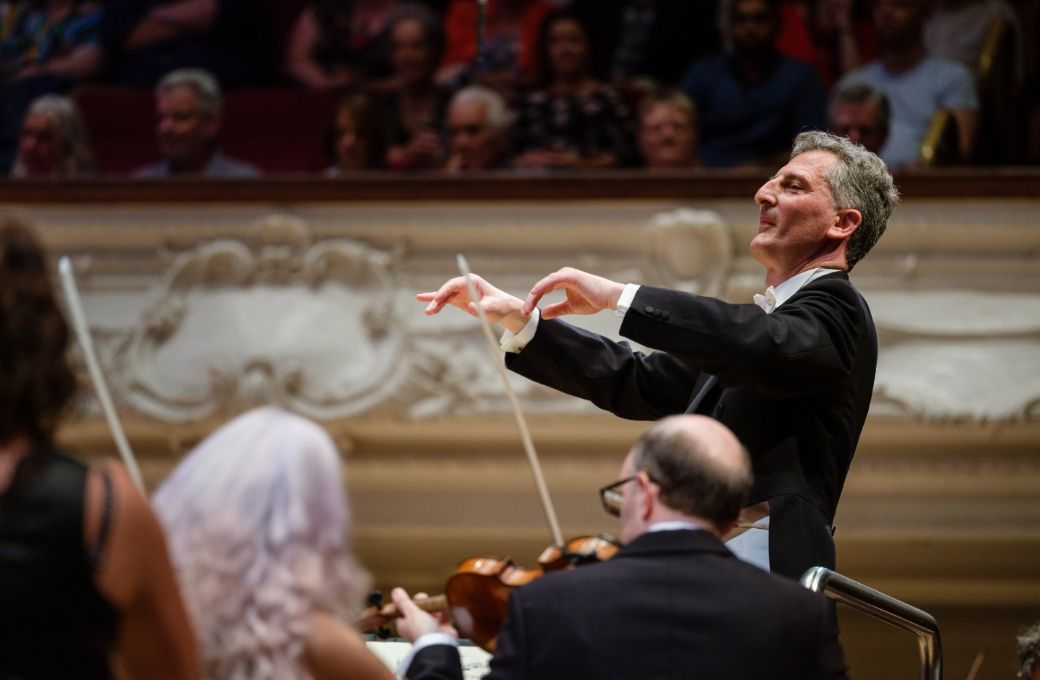Started in 2020 for Beethoven’s 250th anniversary, the Auckland Philharmonia Orchestra’s cycle of the nine symphonies survived multiple postponements due to Covid-19 and finally reached its conclusion, presenting the composer’s final two symphonies. The years of waiting and rehearsing evidently galvanised something within the orchestra and conductor Giordano Bellincampi, as the two symphonies were spectacularly played and interpreted with wonderful dynamism and subtlety.

The performance of the Eighth was an absolute delight from start to finish. Mainly fleet in tempo, this performance was not just deftly played but most importantly, consistently brought out Beethoven’s humorous little touches. Bellincampi effectively highlighted the many sudden accented notes in a way that kept the surprise, giving them a sense of true spontaneity. The first movement began with a very exciting, vigorous opening, with crisp strings and a bubbly bassoon memorably mimicking them. A more whimsical second subject had a suggestion of dance to it, before the recapitulation arrived quite shockingly loud in its sudden mock majesty. Bellincampi really showed how to bring out the contrast between darkness and light.
He brought a lovely buoyancy to the opening of the second movement and once again, the orchestra responded with crisp rhythmic interplay. Despite its nods to Mozart and Haydn, the third movement had nothing like the elegance of a traditional Minuet; instead the thumping rhythms and pastoral lines provided something much more humorous and charming, a verve and gusto very much Beethoven’s own. Solos for clarinet and the horn-led Trio were gorgeously phrased. In the finale, Bellincampi’s responsive baton played up imaginative variations of rhythm and tempi. While forward momentum prevailed, there was also full attention given to colour and detail. An intriguing anxiety permeated the development section, and a slight tense hesitation before the final exposition repeat led to a most exciting close.
The Ninth hasn’t lost its ability to surprise in its ambition and scale, the attributes that some contemporary commentators thought essentially amounted to madness. A menacing tremolo emerged at its beginning and immediately gripped one’s attention. While full of slashing drama, this performance also moved forward with an inexorable momentum toward a strong apotheosis. Finding humour in Beethoven is one of Bellincampi’s strong points, and he certainly brought forward the ironic energy of the Scherzo with its fierce interrupting timpani strokes, the clarity of detail of overlapping lines impressing. The slow movement's paradisiacal beauty was played with lyrical serenity by the strings, almost overwhelming in its beauty. Prominent horn solos were particularly ravishing.
Nothing in music had previously approached the ambition of Beethoven's sprawling, choral finale, and Bellincampi gave each section its due attention without ever sacrificing overall cohesion. Even the exaggerated faux-Turkish music of the tenor solo was somehow made to make sense in its context. The APO played superbly; the cellos and basses handling their recitative-like sections flexibly as others echoed snippets from earlier movements. Their initial statement of the famous Ode to Joy theme was far from hackneyed, a captivating darkness infusing their phrasing. When the higher strings joined, it was like sudden rays of sunshine illuminating the hall; a stunning audio effect indeed.
Samuel Dundas, a late replacement for Teddy Tahu Rhodes, was forthright and strong in his opening baritone utterrances and tenor Manase Latu bringing welcome Italianate warmth to his solo and to the intricate lines in the later sections for the solo quartet. As a whole, the solo vocal team made a positive impression in their difficult contrapuntal writing. A combination of several Auckland choirs made a strong effect, with power in the extrovert sections and admirable clarity in counterpoint, sopranos coping gainfully with the treacherously high, sustained passages. This final chapter of the Beethoven project was certainly worth the wait!


